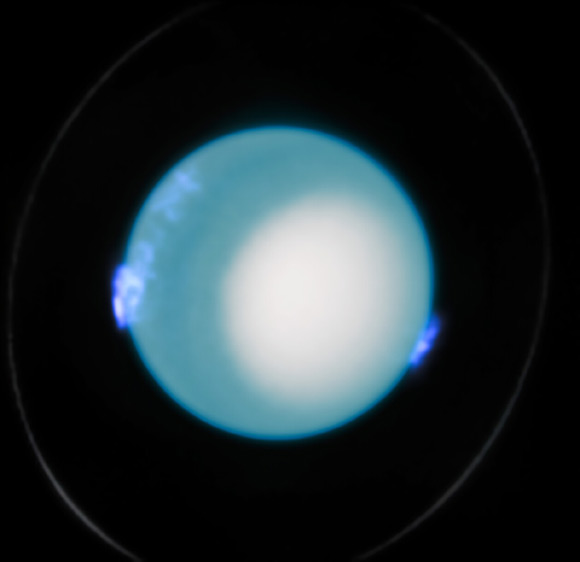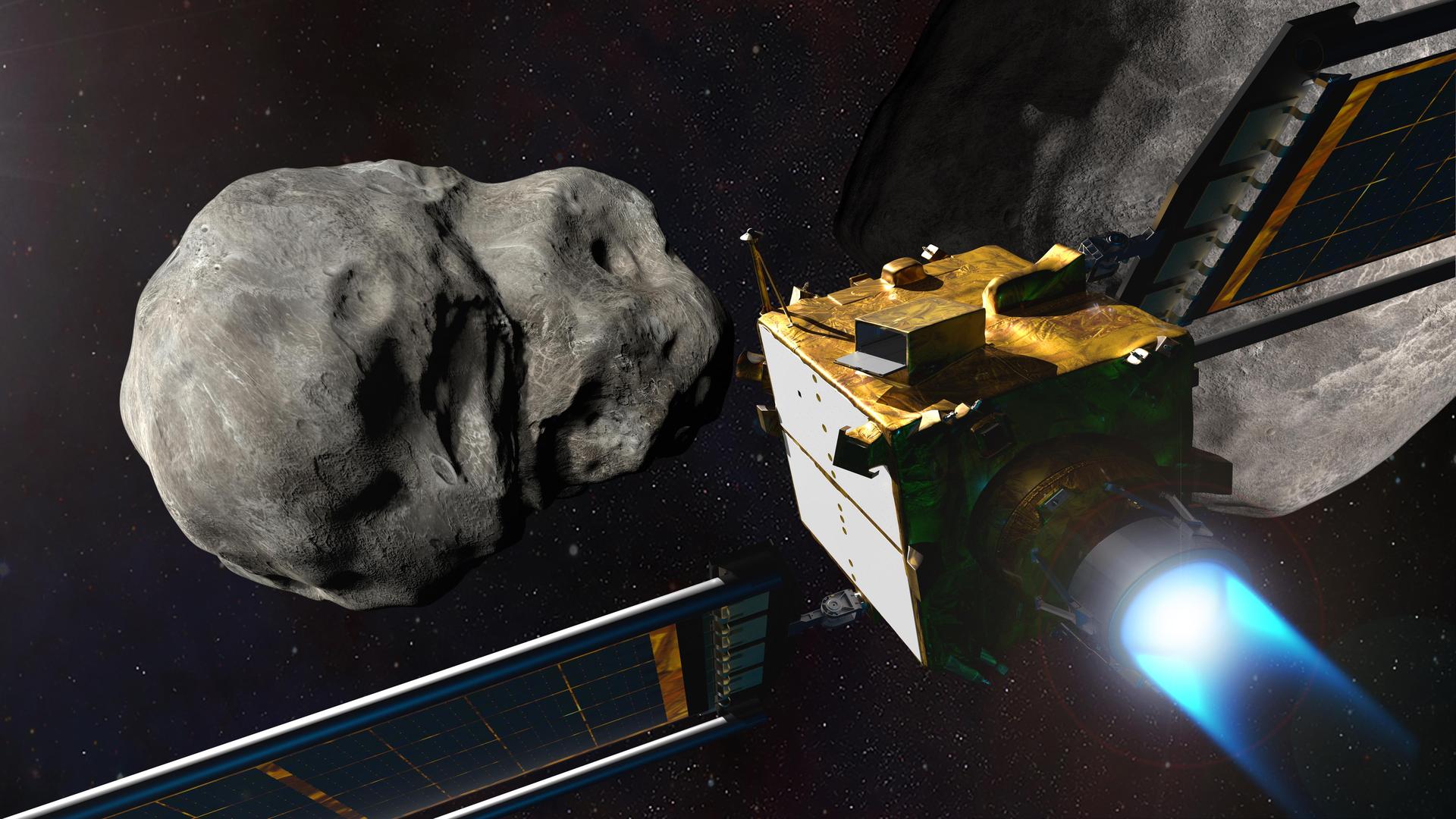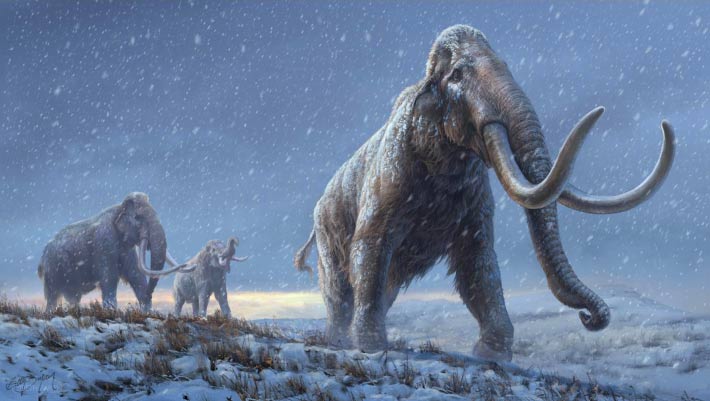The rotation period of Uranus was estimated to be 17.24 hours in 1986 from radio auroral measurements made by NASA’s Voyager 2 spacecraft. Using the long-term tracking of Uranus’ magnetic poles between 2011 and 2022 from Hubble images of its ultraviolet aurorae, astronomers have now achieve an updated, independent, extremely precise rotation period of 17.247864 hours, or 28 seconds longer than the Voyager 2 estimate.
This image of Uranus’ aurorae was taken by Hubble on October 10, 2022. Image credit: NASA / ESA / Hubble / L. Lamy / L. Sromovsky.
“Our measurement not only provides an essential reference for the planetary science community but also resolves a long-standing issue: previous coordinate systems based on outdated rotation periods quickly became inaccurate, making it impossible to track Uranus’ magnetic poles over time,” said Dr. Laurent Lamy, an astronomer with LIRA at the Observatoire de Paris-PSL and LAM at the Aix-Marseille University.
“With this new longitude system, we can now compare auroral observations spanning nearly 40 years and even plan for the upcoming Uranus mission.”
This breakthrough was possible thanks to Hubble’s long-term monitoring of Uranus.
Over more than a decade, the telescope has regularly observed its ultraviolet auroral emissions, enabling the astronomers to produce magnetic field models that successfully match the changing position of the magnetic poles with time.
“The continuous observations from Hubble were crucial,” Dr. Lamy said.
“Without this wealth of data, it would have been impossible to detect the periodic signal with the level of accuracy we achieved.”
Unlike the aurorae of Earth, Jupiter, or Saturn, Uranus’ aurorae behave in a unique and unpredictable manner.
This is due to the planet’s highly tilted magnetic field, which is significantly offset from its rotational axis.
The findings not only help astronomers understand Uranus’ magnetosphere but also provide vital information for future missions.
“These findings set the stage for further studies that will deepen our understanding of one of the most mysterious planets in the Solar System,” the authors said in a statement.
“With its ability to monitor celestial bodies over decades, Hubble continues to be an indispensable tool for planetary science, paving the way for the next era of exploration at Uranus.”
The results were published this week in the journal Nature Astronomy.
_____
L. Lamy et al. A new rotation period and longitude system for Uranus. Nat Astron, published online April 7, 2025; doi: 10.1038/s41550-025-02492-z






















